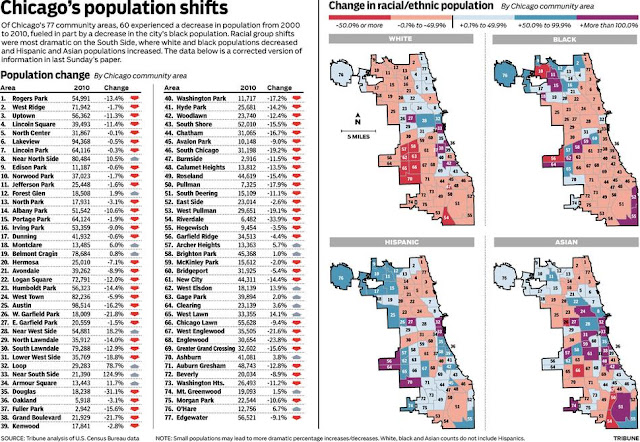| Modern mixed with old-school in Bucktown. |
Population make-up: Hard to say officially. As of the 2000 Census, the Logan Square community area was 26.3% white alone and 65.1% Hispanic. However, Bucktown makes up less than half the geographic area of Logan Square (the eastern portion), and is bordered by mostly the majority-white community areas of Lincoln Park and North Center. Also its equally trendy cousin, Wicker Park, borders it to the south. Meanwhile, the remainder of Logan Square is bordered by the community areas of Hermosa, Avondale, and Humboldt Park, which are predominantly Hispanic in population.
Despite recently becoming a popular area for young professionals, Logan Square’s population dropped 12% from 2000 to 2010, from 82,715 to 72,791.
Getting there: Rail won’t get you to the heart of Bucktown (basically Damen and Armitage), but it’ll put you within walking distance. You can take the Blue Line to Western, but remember there are TWO Western stops on the Blue Line. Make sure to get off at the one on the O’Hare branch and not the Forest Park branch. The Western-O’Hare Blue Line stop will put you on the western edge of the neighborhood. You’ll only be about two blocks south of Armitage. You can also take the Metra to Clybourn. Two Metra lines stop here, the Union Pacific North and the Union Pacific Northwest. This stop will put you on the east side of Bucktown about one block south of Armitage.
Of course, bus is always an option too. Going north-south, the Damen bus (50) runs through the center of the neighborhood. Also going north-south is the Western bus (49) and there are a couple stops on the Ashland bus (9). Going east-west the Armitage bus (73) runs through the heart of Bucktown. Also, there are the buses along Fullerton (74) and Diversey (76 – assuming you’re considering that stretch of Diversey a part of Bucktown). There is also a northwest/southeast bus along Milwaukee Avenue (56).



